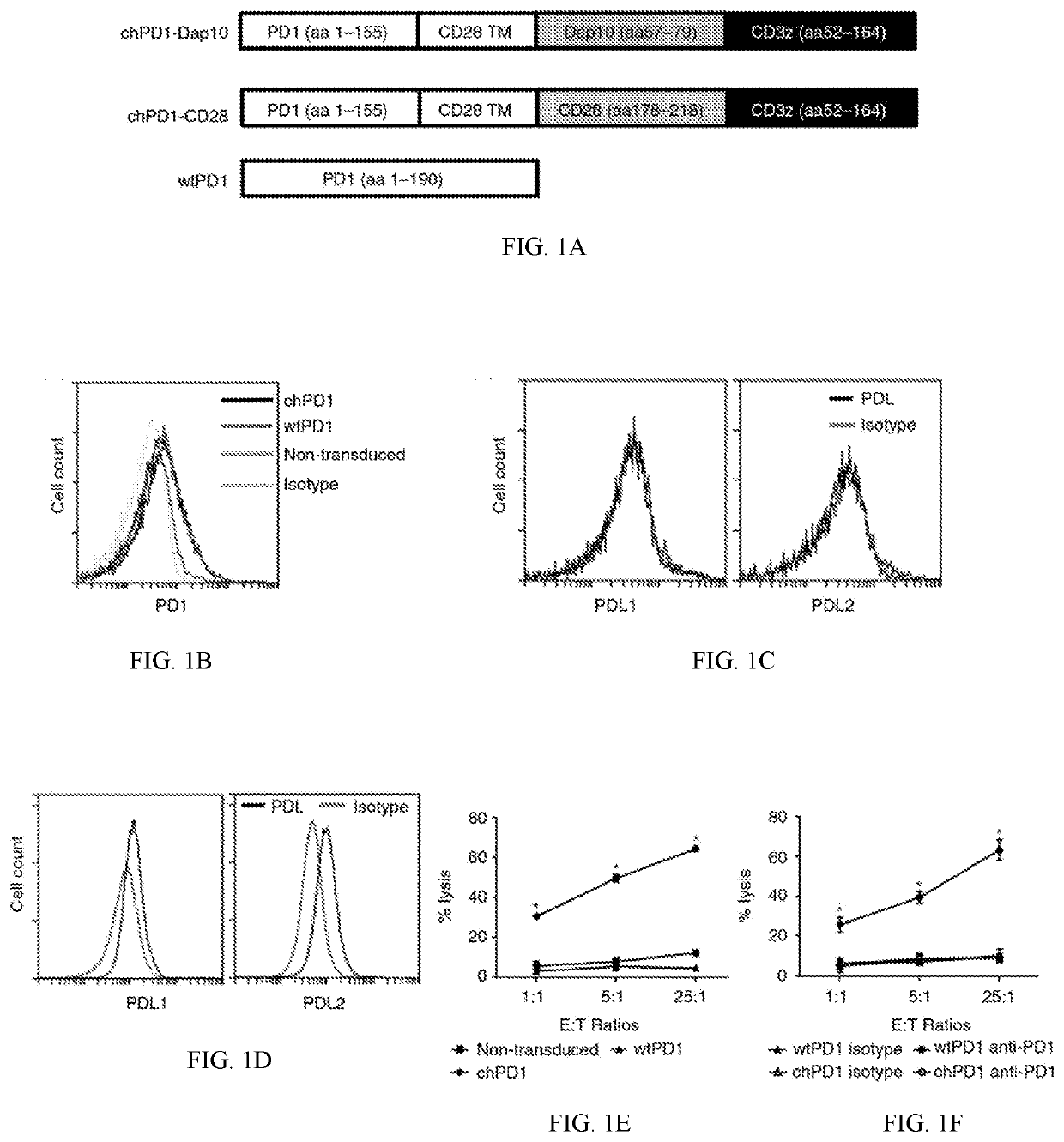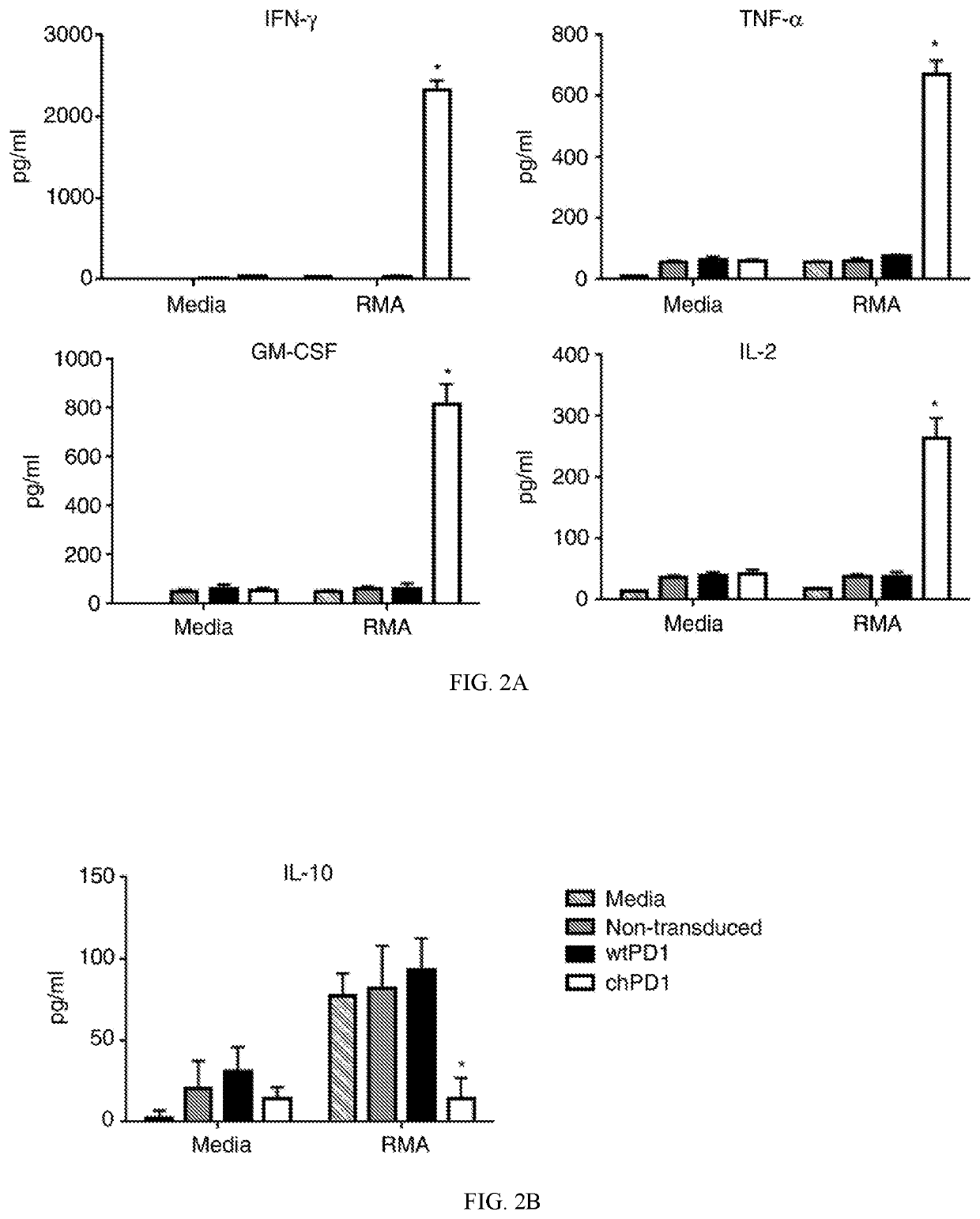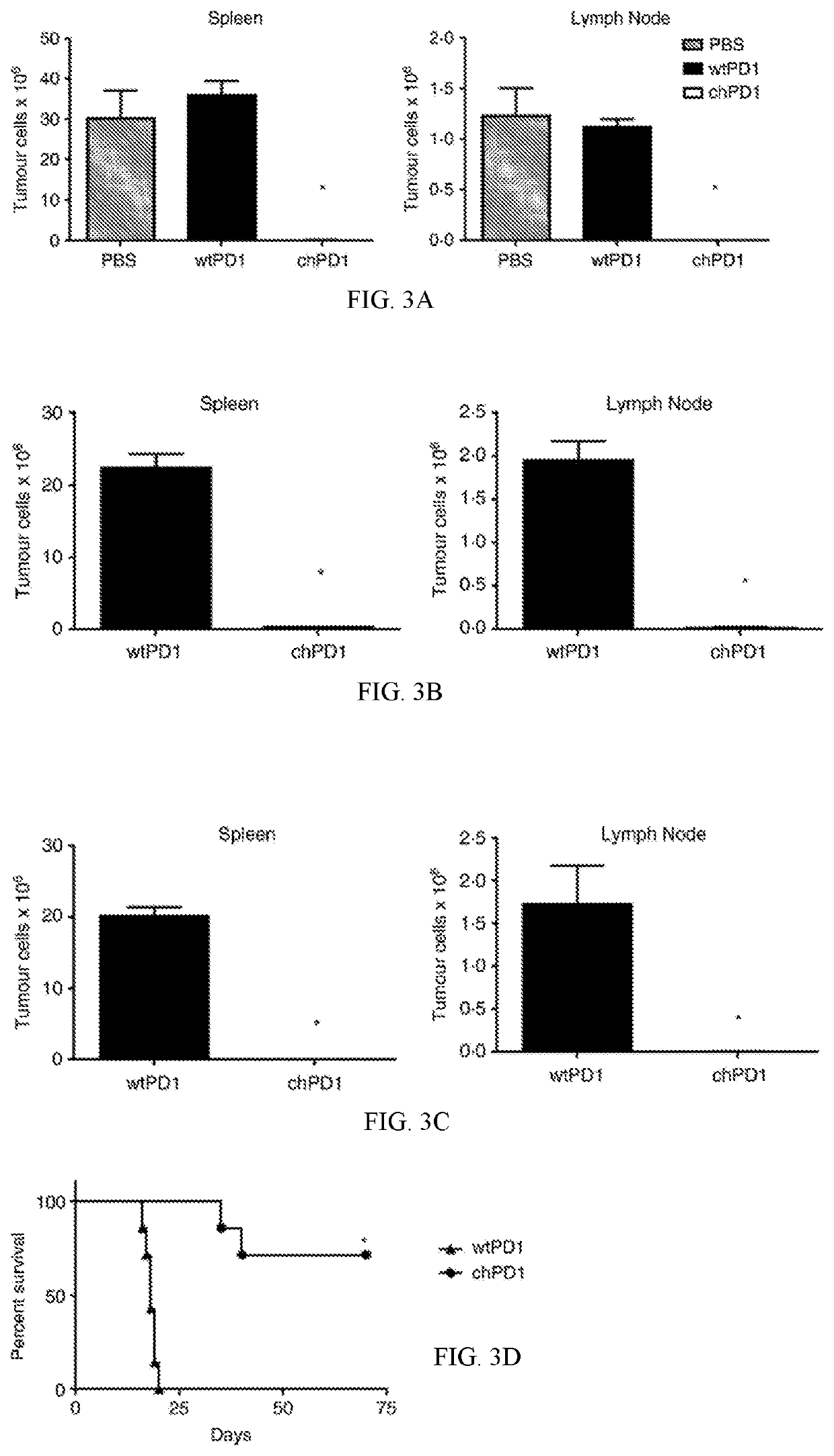Pd1-specific chimeric antigen receptor as an immunotherapy
a chimeric antigen receptor and immunotherapy technology, applied in the field of chimeric antigen receptors, can solve the problems of limiting car t-cell responses and efficacy
- Summary
- Abstract
- Description
- Claims
- Application Information
AI Technical Summary
Benefits of technology
Problems solved by technology
Method used
Image
Examples
example 1
Transfer of Murine T Cells Expressing a Chimeric-PD1-Dap10 Receptor as an Immunotherapy for Lymphoma
Summary
[0075]Adoptive transfer of T cells is a promising cancer therapy and expression of chimeric antigen receptors can enhance tumor recognition and T-cell effector functions. Provided herein is a murine chimeric PD1 receptor (chPD1) comprising the PD1 extracellular domain fused to the cytoplasmic domain of CD3ζ. Additionally, chimeric antigen receptor therapies use various co-stimulatory domains to enhance efficacy. Hence, the inclusion of a Dap10 or CD28 co-stimulatory domain in the chPD1 receptor was compared to determine which domain induced optimal anti-tumor immunity in a mouse model of lymphoma. The chPD1 T cells secreted pro-inflammatory cytokines and lysed RMA lymphoma cells. Adoptive transfer of chPD1 T cells significantly reduced established tumors and led to tumor-free survival in lymphoma-bearing mice. When comparing chPD1 receptors containing a Dap10 or CD28 domain, bo...
example 2
ells Expressing a Chimeric-PD1-Dap10 Receptor as an Immunotherapy
[0101]Adoptive transfer of tumor-reactive T cells is a promising anti-tumor therapy for many cancers. To enhance tumor recognition by T cells, chimeric antigen receptors (CAR) consisting of signaling domains fused to receptors that recognize tumor antigens can be created and expressed in T cells. As presented in Example 1, one receptor that is a target for a new chimeric antigen receptor is PD1 because the ligands for the PD1 receptor are expressed on many cancer types. In the present study, a human chimeric PD I receptor (chPD1) consisting of the PD1 receptor extracellular domain and the activation domain of CD3 zeta was developed. The Dap10 costimulatory domain was also included in the chPD1 receptor as discussed in Example 1. The nucleic acid sequence of the CAR is presented in SEQ ID NO: 2 and the amino acid sequence is presented in SEQ ID NO: 3. To determine if this novel CAR could target a wide variety of tumors,...
PUM
| Property | Measurement | Unit |
|---|---|---|
| Fraction | aaaaa | aaaaa |
| Chemotherapeutic properties | aaaaa | aaaaa |
Abstract
Description
Claims
Application Information
 Login to View More
Login to View More - R&D
- Intellectual Property
- Life Sciences
- Materials
- Tech Scout
- Unparalleled Data Quality
- Higher Quality Content
- 60% Fewer Hallucinations
Browse by: Latest US Patents, China's latest patents, Technical Efficacy Thesaurus, Application Domain, Technology Topic, Popular Technical Reports.
© 2025 PatSnap. All rights reserved.Legal|Privacy policy|Modern Slavery Act Transparency Statement|Sitemap|About US| Contact US: help@patsnap.com



